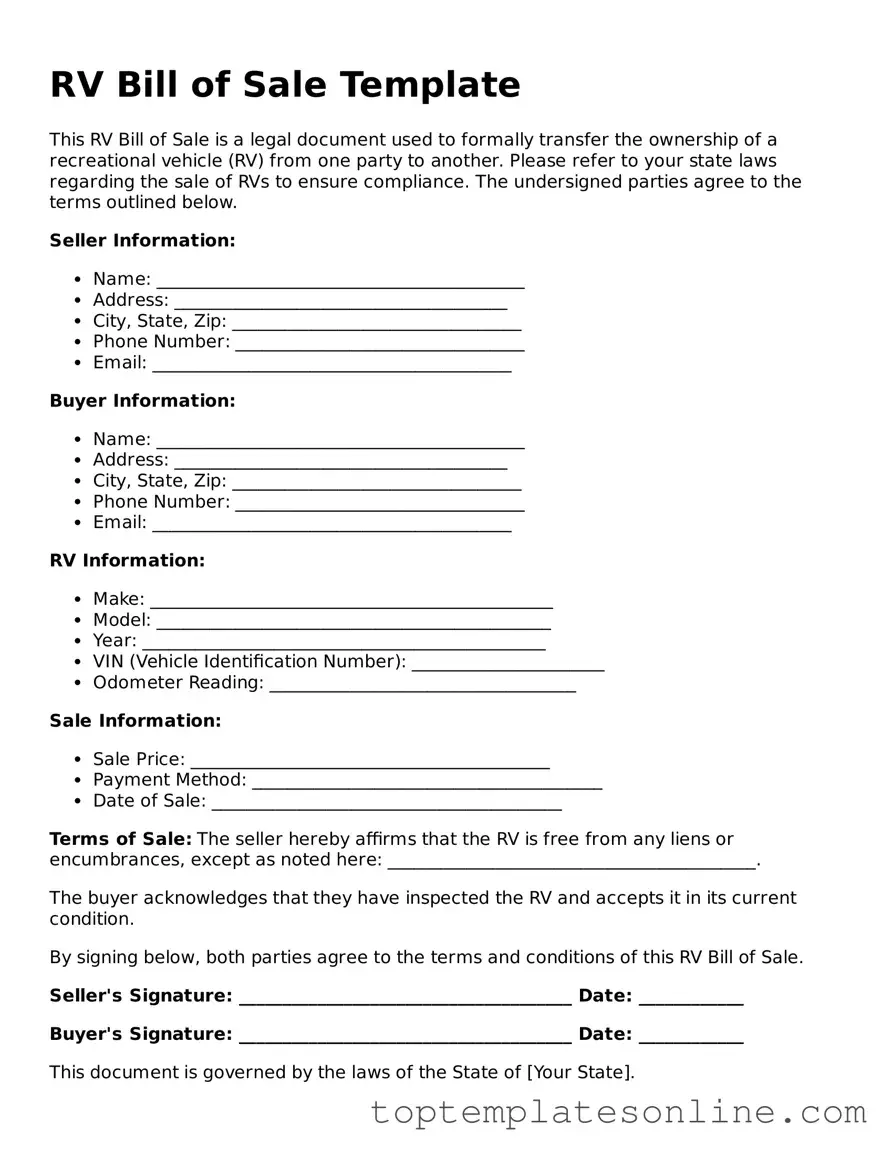Attorney-Approved RV Bill of Sale Form
An RV Bill of Sale is a legal document that records the transfer of ownership of a recreational vehicle from one party to another. This form serves as proof of the transaction and outlines important details such as the sale price, vehicle identification number, and the names of both the buyer and seller. Understanding this form is essential for ensuring a smooth and legally sound transfer of your RV.
Customize RV Bill of Sale Here
